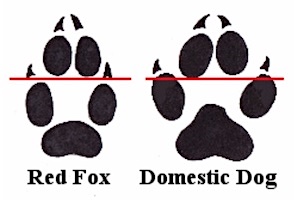Urban Fox Survey
The Urban Fox Survey invites the public to help gather information on Red Fox distribution and expand the knowledge on their relationship with urban environments in Ireland.

Why do we need an Urban Fox Survey?
The urban ecology of our wild animals has become increasingly relevant with the spread of urbanisation across the globe. Red Foxes are a prime example of a species learning to adapt to these rapidly changing environments. Understanding their distribution and behaviour across Irish urban areas can shed light on the needs of the animals and the potential of cities to provide for them.
This project will provide valuable data for conservation planning in Ireland and finding solutions for potential human/wildlife conflicts. Our study will focus on the 7 most populated cities/towns across the island of Ireland; Dublin, Belfast, Cork, Limerick, Derry, Galway, and Waterford.
The Red Fox
Red Foxes (Vulpes vulpes) are widespread across Ireland and are characterised by their red fur, bushy tails and dog-like appearance.
This versatile species is primarily nocturnal with a diverse diet which allows it to exploit a wide range of habitats. As omnivorous opportunists, urban foxes feed mostly on scavenged meat, invertebrates, fruit, and anthropogenic food in cities.
Fox activity increases during mating season in January and February and vixens birth cubs between March and April. Urban foxes are frequent visitors to residential areas and often seek gardens to raise cubs.
Signs of Foxes
Evidence of fox activity can be found in various forms, including tracks, scat, prey remains, fur clumps, and trampled flowerbeds.
The paw prints of foxes vary from dogs with a more oval pad pattern, with the central digits sitting in front of the outer pair.
Due to their broad diet, fox scat can be tightly packed with a range of contents including fur, bone shards, feathers, seeds, and beetle chitin. They can be differentiated from dog faeces by the presence of a tapered curl at the end. Foxes can harbour parasites so we recommend you don’t handle their droppings!

CONTACT US
For any queries regarding the Urban Fox Survey project, please email Urbanfoxsurvey@gmail.com
Please consider supporting the project further by following the following social media platforms!
